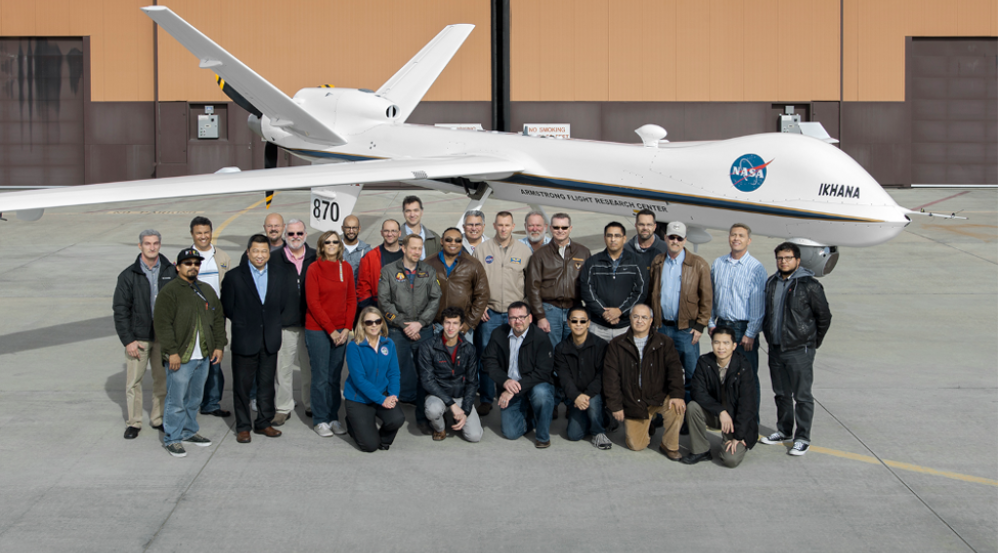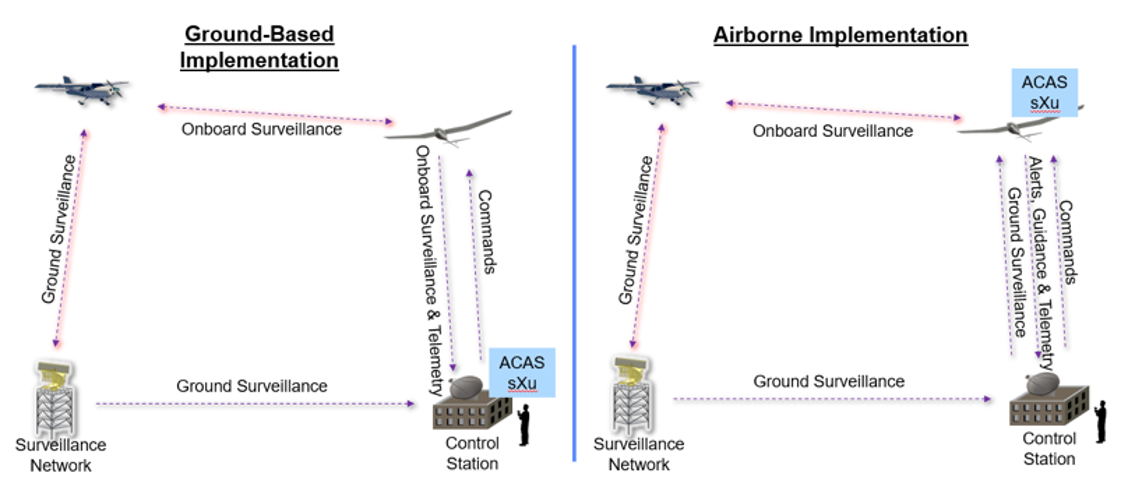
Award-winning technology prevents aircraft collisions

Aircraft safety depends on many factors, including the ability to react quickly and appropriately to avoid midair collisions. With crewed aircraft, this situational awareness and avoidance is largely up to the pilot, who is assisted by a traffic collision avoidance system (TCAS) that warns the pilot of possible midair collisions and provides recommended avoidance maneuver guidance. TCAS is mandated for transport aircraft, including commercial airliners, throughout the world.
While TCAS has improved aviation safety, it has some limitations: it can't be adapted for new types of aircraft, it can't utilize a wide range of sensor data, and it alerts aircraft operators too frequently. To upgrade and replace TCAS, the U.S. Federal Aviation Administration (FAA) funded development of the Airborne Collision Avoidance System X (ACAS X), which has now been in development at Lincoln Laboratory for nearly 15 years.
While the main, initial goal of the project was to replace TCAS on airliners and business jets, the project's scope has been continuously expanded by the FAA to also provide a safe and effective collision avoidance system for all types of aircraft. The lack of a technical system to provide a collision avoidance capability for uncrewed vehicles has been a barrier to their safe integration into the national airspace. ACAS X aims to provide this capability across a wide range of vehicle types.
Development of ACAS X began as an internally funded research and development project at the Laboratory in 2008. Now, there are multiple versions of the project to cover different types of aircraft and needs. These versions of ACAS X include ACAS Xa for transport aircraft, ACAS Xu for larger uncrewed aircraft such as Northrop Grumman's Global Hawk vehicle, ACAS sXu for small drones, and the in-development ACAS Xr for crewed rotorcraft and advanced air mobility vehicles.
ACAS X uses machine learning to quickly create logic and provide an optimal maneuver that is adapted to the aircraft's performance to avoid collisions. This flexibility is important because of the many types of aircraft that are flown today. Sensors on the ground and on each aircraft aid ACAS X in identifying aircraft that may present a potential collision risk. The system then alerts aircraft operators and also provides decision-making assistance in the form of avoidance maneuvers, as needed.

"ACAS X was designed by using the Laboratory's supercomputing capabilities to evaluate system performance in a modeling and simulation environment across all types of encounters, both normal and safety critical, that an aircraft would be expected to encounter," says Wesley Olson, who leads the Surveillance Systems Group in which ACAS X was developed and has worked on collision avoidance since he joining the Laboratory in 2007. "In the course of ACAS X development, we have simulated well over 650 billion aircraft encounters."
Olson's passion for the project comes from his 22 years as a pilot for the U.S. Air Force. He first became interested in aviation safety and collision avoidance systems when a pilot-training classmate was killed in a midair collision.
"I've always had a passion for improving aviation safety," he said. "The area of collision avoidance is very important to me personally."
The initial project, ACAS Xa, was developed as a drop-in replacement to TCAS on crewed flights and will improve safety by 20 percent and reduce nuisance alerts by more than 65 percent. Reducing undesirable alerts to pilots, operators, and air traffic controllers is a key objective of ACAS X and is a large focus of work on the project, with the goal of improving confidence in the system. Different types of aircraft require different alerts depending on their speed, reaction ability, and capacity to detect a possible collision. For example, ACAS Xu provides an alert to the drone operator approximately 75 seconds prior to a potential conflict, can use radar to detect aircraft lacking a transponder, and provides both horizontal and vertical alerts.
The Laboratory is working with the FAA to adopt ACAS X for use in civilian airspace worldwide through approval from the United Nations' International Civil Aviation Organization, and the technology is expected to be gradually equipped in crewed and uncrewed aircraft over the next decade. The approximately 25-person Laboratory team behind ACAS X is also exploring applications of the technology in both maritime and space vehicle collision avoidance. The approach used to develop ACAS X was also used in creating the Laboratory's Ground-Based Sense and Avoid (GBSAA) system for drones. The GBSAA system is currently in use by the U.S. Army as the only available system of its kind certified for use in U.S. airspace by the FAA. It was also awarded an R&D 100 Award by R&D Magazine in 2017, recognizing it among that year's 100 most innovative technologies.
ACAS X has been selected for multiple awards — the project won the Dr. John C. Ruth Digital Avionics Award from the American Institute of Aeronautics and Astronautics in 2019, and was a finalist in 2020 for the National Aeronautic Association's Collier Trophy. ACAS Xu was selected for an R&D 100 Award in 2016, and ACAS sXu also won an R&D 100 Award in 2022.
"I am grateful that the ACAS sXu team has received this well-deserved recognition for their outstanding work," says Olson. "The team has solved many difficult technical issues and ACAS sXu is a key technology to enable commercial small uncrewed aircraft operations. I am very proud of the team and all it has accomplished."
ACAS X is also assisted by the John Hopkins University Applied Physics Laboratory, MITRE, and a variety of FAA organizations.